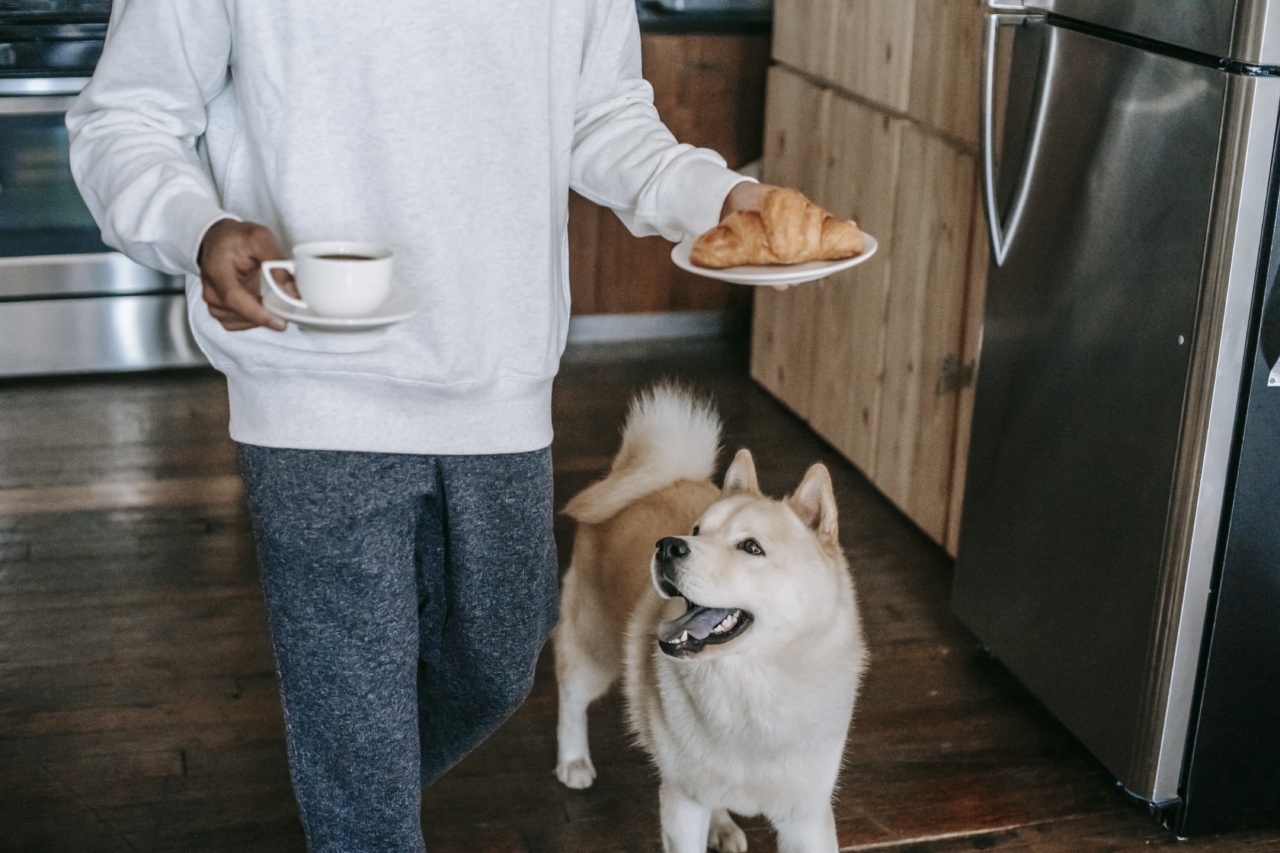It can be incredibly frustrating and even dangerous when your beloved dog sneaks food from the table or pantry.
Not only does it lead to unhealthy eating habits, but it can also result in digestive issues or even poisoning if your pet manages to get hold of something toxic. However, there is a simple trick you can implement to prevent this behavior and keep your dog safe and healthy.
Understanding the Root Cause
Before we delve into the solution, it’s important to understand why dogs engage in this sneaky behavior in the first place. Dogs are natural scavengers, and food is a valuable resource for them.
They have a keen sense of smell and can detect even the smallest food particles, making it tempting for them to try and snag a tasty morsel whenever they get the chance.
Another reason dogs may resort to sneaking food is due to boredom or lack of stimulation. If they aren’t provided with enough mental and physical exercise, they may resort to finding their own entertainment, which often involves seeking out food.
Implementing the One-Trick Solution
The key to stopping your dog from sneaking food lies in teaching them self-control. Here’s the one simple trick you can use to achieve this:.
1. Leave It Command
The “Leave It” command is an essential tool for teaching your dog self-control. Start by holding a treat in your closed hand and letting your dog sniff and investigate it.
When your dog tries to paw at or nibble your hand, firmly say “Leave It” and close your hand, withholding the treat. Repeat this exercise several times until your dog understands that “Leave It” means to avoid touching the treat.
Once your dog is consistently responding to the “Leave It” command with a closed hand, you can progress to placing the treat on the ground.
As your dog tries to grab the treat, use the “Leave It” command to redirect their attention away from the food.
Practice this exercise with various food items in different scenarios, such as during walks or while cooking in the kitchen. Consistency is key to ensuring your dog fully grasps the concept of leaving food alone when instructed.
2. Reward-Based Training
Alongside the “Leave It” command, it’s important to reinforce positive behaviors with rewards. When your dog successfully leaves food alone upon command, be sure to praise them and offer a treat or their favorite toy as a reward.
This positive reinforcement helps strengthen their understanding of the desired behavior.
Remember to be patient during the training process. Dogs learn at their own pace, so it’s important not to get frustrated or give up.
With consistency, positive reinforcement, and patience, your dog will gradually learn to resist the temptation of sneaking food and wait for your permission instead.
3. Manage the Environment
In addition to training, managing your dog’s environment can significantly reduce their opportunity to sneak food. Here are some tips:.
a) Store Food Securely
Ensure all human and pet food is stored securely in cabinets or containers that are inaccessible to your dog. Use childproof locks if necessary, as some dogs can be quite skilled at opening cabinets or pantry doors.
b) Clear the Table
When mealtime is over, make sure to clear the table and countertops of any leftover food or scraps. This removes the temptation for your dog to jump up and help themselves to an unattended treat.
c) Use Baby Gates
If you want to keep your dog out of a specific room during mealtime or while cooking, consider using baby gates to restrict their access. This creates a physical barrier and prevents them from entering the area where food is being prepared or consumed.
d) Supervise Meals
If you have multiple dogs, it’s essential to supervise their meals to prevent food stealing or aggressive behavior. Each dog should have their own designated eating area and should only access their own food bowl.
This ensures fairness and reduces the chances of one dog sneaking food from another.
4. Provide Mental and Physical Stimulation
As mentioned earlier, boredom can lead to sneaky behaviors. Make sure your dog receives enough mental and physical stimulation throughout the day.
Engage in regular play sessions, go for walks, and provide interactive toys that challenge their problem-solving abilities. A tired and mentally stimulated dog is less likely to seek out opportunities to sneak food.
5. Seek Professional Help
If your dog’s behavior persists or becomes worse despite your best efforts, it may be worthwhile to seek assistance from a professional dog trainer or behaviorist.
They can assess your dog’s behavior in-depth, identify any underlying issues, and provide tailored solutions to address the problem effectively.
Conclusion
Sneaking food can be a frustrating and potentially dangerous behavior in dogs.
However, with the implementation of the “Leave It” command, consistent training, environmental management, and adequate stimulation, you can successfully stop your dog from engaging in this behavior. Remember, patience and positive reinforcement are key to achieving long-lasting results. By investing time and effort in training, you can ensure your dog’s safety and wellbeing.


























